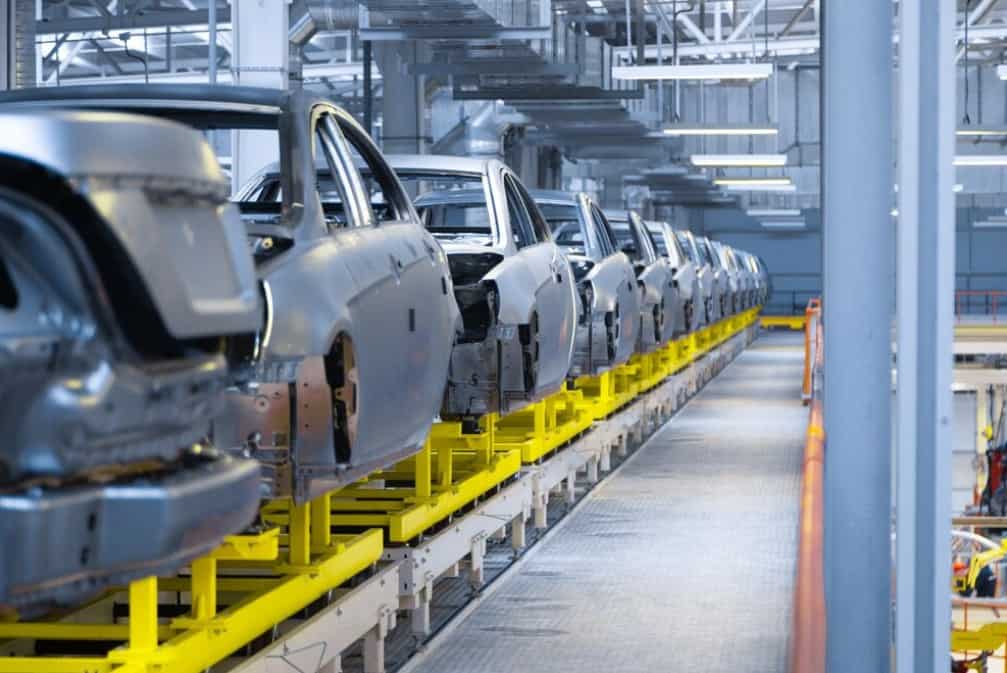Advanced Materials and Lightweighting in the Automotive Industry
The automotive industry has been on a continuous quest for innovation and improvement in various aspects of vehicle design and manufacturing. One of the most significant areas of focus in recent years has been the development and adoption of advanced materials and lightweight technologies. These innovations not only enhance the overall performance of vehicles but also contribute to achieving sustainability and fuel efficiency goals. In this article, we will delve into the world of advanced materials and lightweighting in the automotive industry, exploring their impact on vehicle design, safety, fuel efficiency, and environmental sustainability.

The Significance of Lightweighting
Lightweighting refers to the practice of reducing a vehicle’s weight without compromising its structural integrity, safety, or performance. The automotive industry has long recognized the benefits of Lightweighting in the Automotive Industry, which include:
Improved Fuel Efficiency
Reduced vehicle weight leads to better fuel economy, as lighter vehicles require less energy to move. This is particularly important as the industry shifts toward electrification, where every pound of weight affects the range of electric vehicles (EVs).
Lower Emissions
Lightweighting not only saves fuel but also reduces greenhouse gas emissions. Lighter vehicles produce fewer emissions per mile, aligning with global emissions reduction targets.
Enhanced Safety
New lightweight materials and designs can offer improved crash safety. By carefully selecting materials and optimizing structural design, manufacturers can create vehicles that are both lightweight and safe.
Better Handling and Performance
Reduced weight can enhance a vehicle’s agility, acceleration, and overall performance. This is particularly important for sports cars and high-performance vehicles.
Read more: The Allure Of Metallic Paint In Luxury And Exotic Cars
Electric Vehicle Range
In the case of electric vehicles, lightweight is crucial for extending range, as every pound saved translates to more miles driven on a single charge.
Advanced Materials in Automotive Manufacturing
The automotive industry is undergoing a transformation in materials selection. Advanced materials are supplementing and, in some cases, replacing traditional steel and iron components. Some of the key advanced materials used in modern vehicle manufacturing include:
Advanced High-Strength Steel (AHSS)
These steels are stronger and lighter than traditional steel, offering enhanced crash safety and lightweighting benefits. AHSS is used extensively in modern vehicles, especially in critical structural components.
Read more: Preserving Classic Beauty: The Role Of Immobilizers In Protecting Classic Cars
Aluminum
Aluminum is lightweight and corrosion-resistant, making it a popular choice for components like engine blocks, suspension parts, and body panels. It is also a common material in electric vehicle battery enclosures.
Carbon Fiber
Known for its exceptional strength-to-weight ratio, carbon fiber is used in high-performance and luxury vehicles to reduce weight while maintaining structural integrity. It is commonly found in body panels, interiors, and chassis components.
Magnesium
Magnesium is the lightest structural metal, and its use in components such as transmission cases, steering wheels, and seat frames helps reduce overall vehicle weight.
Plastics and Composites
Lightweight plastics and composites are used in various non-structural parts like bumpers, interior trim, and dashboards. They provide weight savings and flexibility in design.
Technologies in Lightweighting in the Automotive Industry
To achieve the desired level of lightweighting, automotive manufacturers are implementing innovative technologies and design approaches, including:
Additive Manufacturing
3D printing allows for the creation of complex, lightweight structures with minimal material waste. Components can be designed with intricate internal geometries that reduce weight while maintaining strength.
Multi-Material Construction
Combining different materials in a single component allows manufacturers to maximize strength-to-weight ratios. For example, carbon fiber-reinforced composites can be used in conjunction with aluminum or steel.
Advanced Joining Techniques
Adhesive bonding, riveting, and laser welding are used to join materials seamlessly, creating a unified and lightweight structure.
Design Optimization
Computer-aided design (CAD) and simulation software enable engineers to optimize the shape and structure of components for maximum strength and minimum weight. Topology optimization is a process where software determines the most efficient design given certain parameters and constraints.
Smart Materials
The development of smart materials that can change their properties in response to external stimuli is another avenue for lightweighting. These materials can be used in active suspension systems or other components to reduce weight and improve performance.
Challenges and Considerations
While advanced materials and Lightweighting in the Automotive Industry offer numerous advantages, there are also challenges that the industry faces:
Cost
Advanced materials and manufacturing techniques can be more expensive than traditional ones, affecting vehicle costs. However, as adoption increases, economies of scale may lead to cost reductions.
Recycling and Disposal
The environmental impact of materials, especially composites and carbon fiber, must be considered. Developing efficient recycling and disposal methods for these materials is crucial.
Safety
Ensuring that lightweight doesn’t compromise vehicle safety is a primary concern. Rigorous testing and design considerations are essential to maintain crashworthiness.
Material Availability
Some advanced materials, like rare earth metals used in electric vehicle batteries, may face supply chain challenges. Diversifying material sources and exploring alternative materials is important.
Conclusion
The adoption of advanced materials and lightweighting in the automotive industry represents a significant leap forward in the quest for more efficient, sustainable, and safer vehicles. As the industry continues to evolve, the careful selection of materials, innovative manufacturing processes, and ongoing research into new materials and technologies will shape the vehicles of the future. Lightweighting will play a pivotal role in the success of electric vehicles, improved fuel efficiency, and enhanced safety, making it a central focus for the automotive industry in the years to come.


hi nice